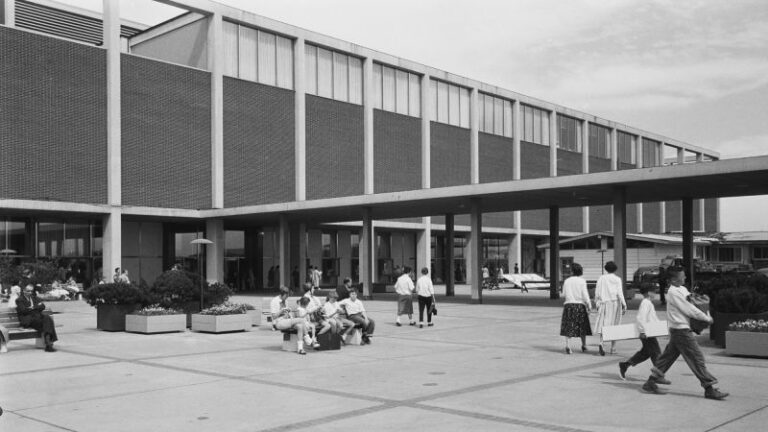
Investors looking for high-yielding dividend stocks to buy should now turn their attention to the health care sector: Three relatively reliable drugmakers are trading near 52-week lows.
Their share prices may have taken a beating, but it’s more than likely that better days are ahead. Here’s how these stocks can produce heaps of passive income for patient investors who buy now.
1. Pfizer
Shares of Pfizer (NYSE: PFE) are down about 55% from their peak in early 2022. At recent prices, they offer an impressive 6.2% dividend yield. In short, the stock fell because sales of its COVID-related products fell much faster than expected.
Investors looking for income will be happy to know that Pfizer knows how to manage periods when sales of some of its drugs are falling rapidly. The pharmaceutical giant has been able to increase its dividend payout every year since 2009, and this isn’t the first time some of its biggest revenue streams have suddenly dried up.
Despite the drop in sales of its COVID-19 products, management expects adjusted earnings of $2.15 per share and $2.35 per share this year. That will be more than enough to cover a dividend payment currently set at $1.68 per share per year.
Investors can reasonably expect another 15 years of steady payout growth from Pfizer. The Food and Drug Administration approved a record nine new drugs for the company in 2023, and those aren’t its only new sources of revenue either. In 2023, Pfizer acquired Seagen, a cancer drug developer with four commercialized therapies.
2. Johnson & Johnson
Johnson & Johnson (NYSE: JNJ) The stock is down about 22% from an all-time high it hit in 2021. In April, the drug and medical technology company raised its dividend payout for the 62nd consecutive year.
J&J also experienced COVID-19 product sales that fell as fast as they rose, but that didn’t stop it from increasing its dividend payout by 30.5% over the past five years. At recent prices, Johnson & Johnson shares offer a yield of 3.4%.
Shareholders can look forward to more significant payout shocks. Last year, Johnson & Johnson completed the spin-off of its relatively slow-growing consumer goods segment into a new company called Kenvue. This year, management expects adjusted earnings per share to grow 7.7% in the middle of its guidance range.
A lot can happen over the next 62 years, but investors can reasonably expect at least another decade of substantial dividend growth from J&J as its various businesses thrive. For example, in the first quarter, sales of the company’s Impella heart pumps were up 15% year over year, and there is no competing device on the horizon.
Medical technology isn’t the only operating segment firing on all cylinders for J&J these days. Taking into account the impact of sales of the COVID-19 vaccine, its pharmaceutical revenue rose 8.3% year-over-year in the first quarter.
3. Bristol Myers Squibb
Shares of Bristol Myers Squibb (NYSE: BMY) have fallen about 50% from their peak in late 2022. At its depressed price, the pharma stock offers a dividend yield of 5.9%.
In December, Bristol Myers Squibb raised its quarterly payouts for the 15th year in a row, and those payout bumps have been stronger than those offered by most of its peers. The pharmaceutical company has increased its payouts by 46% over the past five years.
The stock market has hammered shares of Bristol Myers Squib in part because it reported a hefty first-quarter loss of $11.9 billion. That loss was due to a $12.9 billion charge it recorded for purchased in-process research and development (IPR&D) — in other words, matters related to recent acquisitions. In the first quarter alone, it has transacted with four companies, including Karuna Therapeutics.
Karuna is developing a next-generation schizophrenia treatment called KarXT that has already been shown in clinical studies to significantly improve symptoms. The Food and Drug Administration is reviewing it now and its decision is expected to be announced on or before September 26.
Bristol Myers Squibb generated $12.5 billion in free cash flow last year and needed only 38% of that amount to cover dividend payments. With possible help from KarXT and a handful of other recently acquired late-stage development candidates, another 15-year streak of dividend growth isn’t an unreasonable expectation.
Should you invest $1,000 in Pfizer right now?
Before you buy Pfizer stock, consider this:
of Motley Fool Stock Advisor the team of analysts just identified what they believe they are Top 10 Stocks for investors to buy now… and Pfizer was not one of them. The 10 stocks that made the cut could produce monster returns in the coming years.
Consider when Nvidia I made this list on April 15, 2005… if you invested $1,000 at the time of our recommendation, you would have $801,365!*
Stock advisor provides investors with an easy-to-follow plan for success, including instructions for building a portfolio, regular updates from analysts, and two new stock picks each month. of Stock advisor the service has more than quadrupled return of the S&P 500 since 2002*.
See 10 shares »
*Stock Advisor returns on June 10, 2024
Cory Renauer has no position in any of the stocks mentioned. The Motley Fool has positions in and recommends Bristol Myers Squibb, Kenvue and Pfizer. The Motley Fool recommends Johnson & Johnson and recommends the following options: long January 2026 $13 Kenvue calls. The Motley Fool has a disclosure policy.
3 High-Yield Dividend Stocks Near Their 52-Week Lows to Buy and Hold was originally published by The Motley Fool



